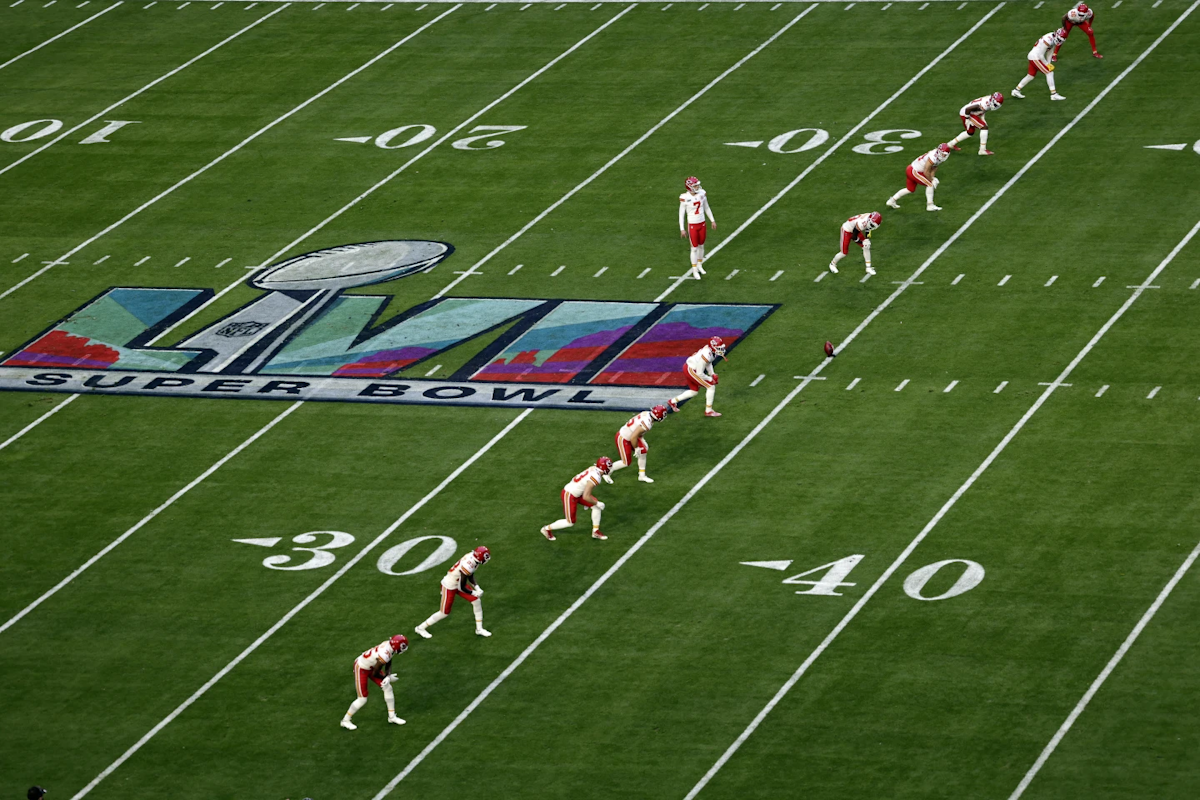By Josh Dubow
SANTA CLARA, Calif. (AP) — As a player who solidified his place in the NFL as a special teams’ standout with his skill covering kicks and blocking for returns, San Francisco 49ers linebacker Oren Burks has a keen interest in the preseason.
With a new rule on kickoffs giving return teams the ball at the 25 after fair catches in the field of play, Burks is waiting to see how often teams utilize the option and how often kicking teams try to prevent it with squib kicks.
“I’m sure the preseason will be a time for coordinators to kind of play with the rules and see what works and what doesn’t,” Burks said. “But for a guy that loves covering kicks, I’m not a big fan of a lot of fair catches.”
A group of special teams coaches rallied together and tried to lobby the NFL against the change but were unsuccessful.
Now they have to figure out how to best adjust with the unknown of how the rule will play out. In the first exhibition game last week, there were no fair catches in the field of play and no squib kicks. But that figures to change at some point.
LA Rams Ben Skowronek #18, Antoine Brooks Jr #39 and Christian Rozeboom #56 race to the ball during KO against Tennessee Titans. AP Photo/John McKoy
It’s just the latest move to try to reduce the number of kickoff returns in hopes of cutting down on concussions.
What once was one of the NFL’s more exciting plays, with gamebreakers like Devin Hester, Josh Cribbs and Mel Gray striking fear in the opposition with their ability to turn kicks into scores or long returns, is on the road to becoming nearly obsolete.
In the 20 years between 2002 and 2022, the percentage of kicks that went for touchbacks increased more than sevenfold from 8.2% in 2002 to 61.3% last season.
The NFL estimates the touchback rate will rise to nearly 70% this season with the new rule, which it also estimates will reduce concussions by 15%. Kickoffs are the most dangerous play in the game in terms of injuries because of the high-speed collisions they generate.
The NFL previously moved the touchback spot from the 20 to the 25-yard line in 2016 and moved the spot for kickoffs from the 30 to the 35-yard line in 2011. There have also been changes in blocking rules the eliminated wedge blocking in order to reduce the collisions.
That has led to a reduction in kickoff return touchdowns from 23 in 2010 to just six last season.
“I do feel bad for the guys that make their money on kickoff,” Commanders kicker Joey Slye said. “If they start taking away some of the reps from some of those guys that make their money that way, Jeremy Reaves goes to the Pro Bowl last year because he’s making tackles on special teams all the time. I just hope guys like that don’t get a lot of stuff taken away from them.”
If these rules don’t help, the NFL could consider a more drastic change by adopting a rule similar to the one in the XFL spring league where the kick coverage team lines up at the opposing 35-yard line — 5 yards away from the return blockers — and no one can move until the returner catches the ball.
“I would say as a military guy, I got real good at tell me what the rules are and I’ll live by the rules,” Bills special teams coach Matt Smiley said. “So the league has put this rule in place and very good intent behind the rule so it’s my job to figure out what’s the best way to follow the rule to the benefit of the Buffalo Bills.”
AP Pro Football Writer Dennis Waszak Jr., and AP Sports Writers Mark Anderson, John Wawrow and Stephen Whyno contributed to this story.

